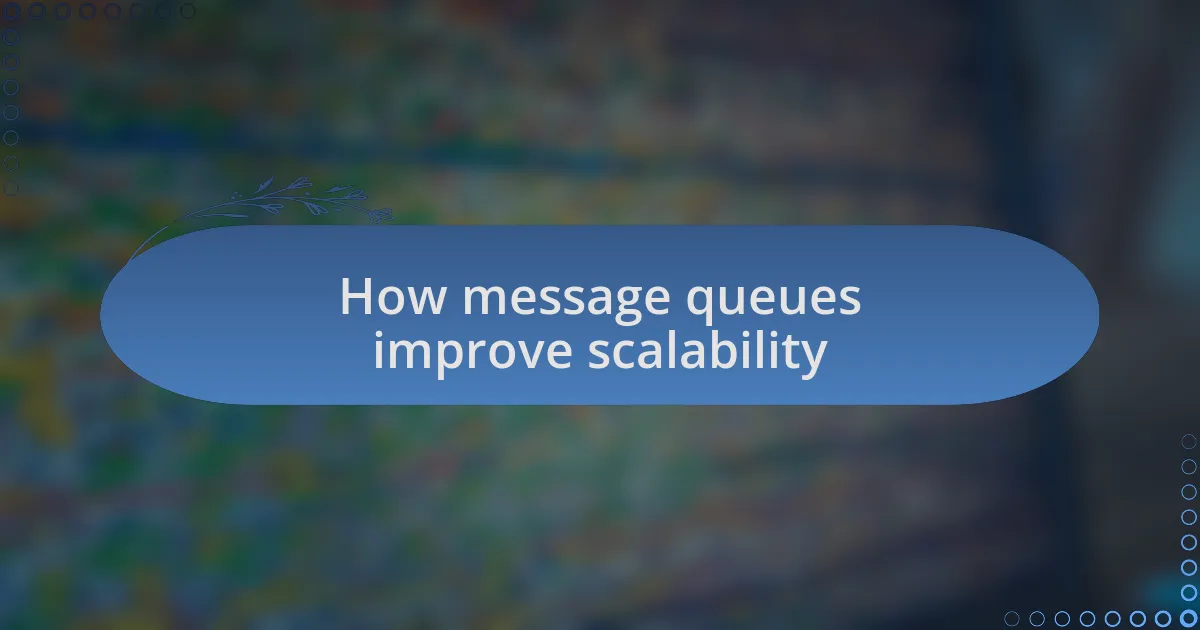Key takeaways:
- Message queues significantly enhance scalability by allowing components to operate independently, accommodating higher traffic without disruptions.
- Challenges include issues with message duplication, order of delivery, and the complexity of monitoring multiple queue instances.
- Proper configuration and monitoring tools are crucial to avoid setbacks and ensure a smooth user experience and system performance.
- Message queues facilitate both vertical and horizontal scaling, providing developers reassurance as user demands increase.

How message queues improve scalability
When I first started implementing message queues in my projects, I was surprised at how they effortlessly handled a surge in user requests. Suddenly, my web applications could support higher traffic without a hitch, thanks to the decoupled architecture that these queues foster. It’s fascinating how allowing different components to operate independently can lead to such significant scalability improvements.
One particular instance stands out to me. I had launched an e-commerce site, and during a flash sale, I feared the server would buckle under pressure. By relying on a message queue, I not only managed the overwhelming influx of orders but also provided a seamless experience for users. They could continue to browse while their cart updates in the background, which kept frustration at bay. Isn’t it amazing how a simple shift in infrastructure can transform the user experience?
Moreover, I’ve seen firsthand how implementing message queues allows for scaling both vertically and horizontally. It opens the door for adding more servers as needed, without disrupting the existing system. This adaptability gives developers like me a sense of peace—knowing that as our user base grows, our systems can grow right along with it, effortlessly accommodating more load without constant overhauls. Isn’t that the kind of reassurance every developer dreams of?

Common challenges with message queues
Common challenges with message queues often arise from issues like message duplication and delivery guarantees. I remember a time when I was troubleshooting a failed order processing system. A user would often receive duplicate confirmation emails because of the way our message queue was configured. It was a frustrating experience for both the team and the customers, highlighting the importance of understanding how to configure message acknowledgment settings properly.
Another challenge I’ve encountered is maintaining the order of message delivery. In one of my projects, we relied on a message queue to handle critical updates, but sometimes the messages were processed out of sequence. This disarray led to inconsistent states in the application, leaving me to explain to my colleagues why the data wasn’t matching their expectations. Have you ever been in a situation where the tech seemed to be working against you rather than for you? It can be quite exasperating.
Lastly, monitoring and maintaining the health of message queues can become cumbersome. As I scaled one application, I found myself juggling numerous queue instances and struggling to keep track of their performance. There were moments when I wished for an easier way to visualize the data flow. It’s essential to invest in monitoring tools early on to catch these issues before they snowball into larger problems that could impact user experience. Have you faced something similar? Finding the right tools can make all the difference.